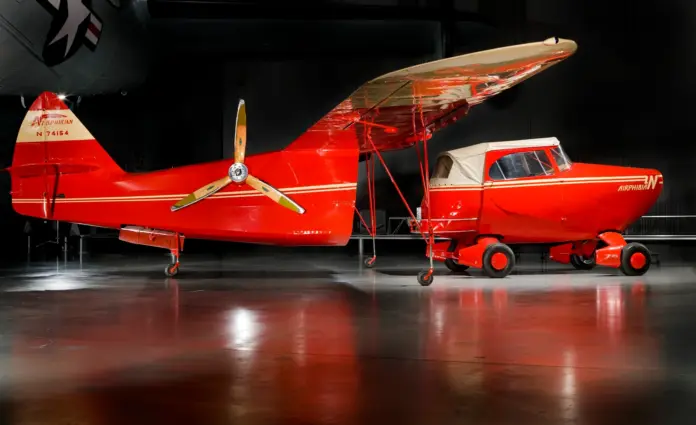“”When the airplane was invented, people came up with all kinds of amazing ideas about what airplanes were going to do,” says aviation historian Janet Bednarek, a history professor at the University of Dayton in Ohio. Society had lofty hopes for the flying crafts: “They were going to create world peace. They were going to improve human beings, and bring about greater racial and gender equality,” she says. Of course, the idea of fusing already popular automobiles with novel airplanes was even more appealing. “It’s the most persistent part of [the aviation ideal] that doesn’t die,” Bednarek notes. If fiction is any gauge (Chitty Chitty Bang Bang, The Jetsons, Back to the Future), flying cars have captured our collective imagination; they often represent individual freedom—the ability to go wherever, whenever, even through time.”
“Despite so many obstacles, the transportation landscape might finally be ready for flying cars—and it’s mostly thanks to deep-pocketed investors. A collection of companies like Terrafugia, Klein Vision, Pal-V, and Aeromobil have announced plans to soon offer true hybrid flying cars , equally capable of cruising down the freeway and soaring through the skies.”
“Bednarek is not so sanguine about the coming whirlwind of air traffic, including flying cars. “I think people would actually be rather repulsed by the environmental impact,” she says, citing the visual, noise, and carbon pollution. “I’m not entirely convinced that we should get there, even if we could.” She concedes, though, that flying cars remain “probably the most persistent dream of those who are enthusiastic about flight.””
____________________________________________________
Gourgey, B. (2022, May 24). What it would take for cars to actually fly. Popular Science. https://www.popsci.com/aviation/history-of-flying-cars/
____________________________________________________
This article touches on a lot, from the culture around planes changing the world, to new advancements in air traffic. The way air travel, flying cars specifically, still has such an interesting grip on so many visions of the future is interesting. If this is because flight feels like freedom, how can that be communicated? Can a taste of that experience be designed? Additionally, is it important to get people thinking about the future of aviation as they learn about the past? It could be a good way to get people involved in exhibits displaying the older technology, showing how relevant it still is.




